45th Portable Surgical Hospital
1943


How People
Treat
"Other People"
History of the 45th Surgical Hospital
Brinton Motherals Super 8 Videos
| 1st 45th, written By Paul Theobald The Article is released under GFDL, by Paul Theobald |
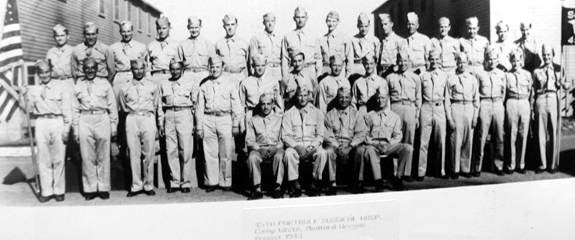 |
|
History of the Portable Surgical
Hospitals During the summer and fall of 1942, a team of Medical Corps officers modified the basic War Department T/O&E for a standard 25-bed station hospital (T/O&E 8-560, 22 July 1942) into a new theater T/O and table of basic allowances (T/BA) (T/O 8-508-S-SWPA, 31 October 1942) for a portable hospital of 25-beds. The new unit was capable of supporting small units in its camp-type version (with 4 female Army nurses and organic vehicles) or battalion and regimental combat teams in its task force version (without the 4 nurses and organic vehicles). Commanded by a Medical Corps captain or major, the new 29-man portable hospital had 4 medical officers (3 general surgeons and a general surgeon/anesthetist) and 25 enlisted men, including 2 surgical and 11 medical technicians. What really marked a radical departure was that all of the unit's equipment, medical and surgical supplies, and rations could weigh no more than the 29 men could personally transport. Hastily assembled and trained, the portable hospitals suffered from many shortcomings in personnel and equipment, which would soon become obvious in jungle fighting. . Probably the single most critical problem was the severe limitation placed on the total weight to assure the units portability. From the start, this meant that to be portable the unit had to give up medical and surgical equipment and supplies that would have been most useful in the field. The Original 45th
PSH The first 45th A TRAGIC MISTAKEThe code number 9201V was assigned to the 45th
PSH. The code #9201T was assigned to the 44th PSH which was also at
WE ARE GOING OVERSEAS The 45th departed
from THE WAR IN The Ledo road was
under construction and with the onset of
the rainy weather; progress in construction and travel was slow. The fighting
front was near Kamaing As the front moved forward, the hospital packed and moved into Kamaing. It was in Kamaing where the hospital treated soldiers of Wingates raiders .It was the first medical treatment for the Wingate raiders who were dropped behind Japanese lines with the promise that they would be taken out in a couple of weeks. They had been behind the lines for 50 or more days, they either walked out or floated out on the river. The hospital moved to Mogaung The number of war casualties that we operated on was
decreasing as each day passed and we operated on a number of local
people who needed medical treatment for injuries or medical problems not due to
the war. When the monsoon season came to an end, we traveled by jeep train
south to Mawlu. The 45th received orders to pack up and return to
the airfield south of Mogaung where we would be transported by plane over the
hump to We stayed in a hostel while in Our trip to the front was made mostly by trucks except for t
he last 100 miles into Kwelin.. This segment of the
trip was made by boat, horseback, or walking. We sat on a rim around MEDICAL PROBLEMS OF THE 45TH
HOSPITAL PERSONEL The 45th hospital personnel were lucky in that they had no casualties as a result of the war actions. There were many who were hospitalized mostly for malaria and diarrhea or a jungle rot fungus infection. .Many became ill after returning home. Hookworm infection was very common in the regions where the hospital was located but only one case was reported after the men returned home. There was a couple cases of war anxiety which resulted in pensions and medical discharges. The unit was awarded several citations by the Chinese army and government. The hospital personnel were awarded 4 bronze battles stars. Several were awarded the Silver Star and the Bronze Star. The original unit was in the CBI theatre for almost 2 years
There are just a few men still
alive who made up the ORIGINAL 45th  a
surgeon from
Additional Photographs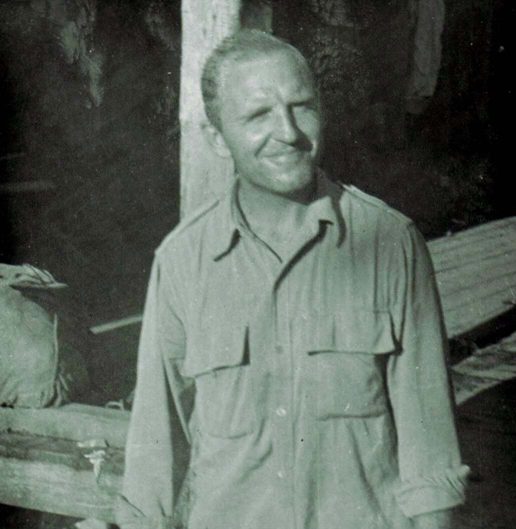 Captain Dardes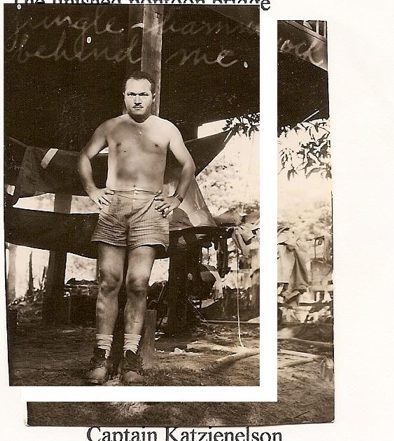 Captain Katzienelson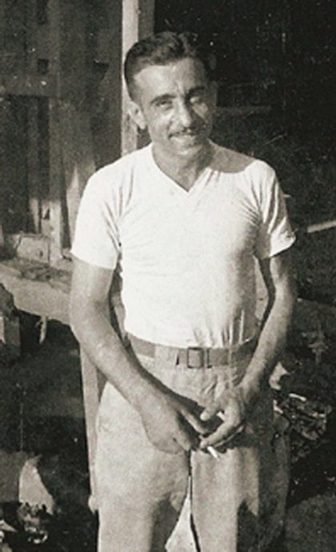 Captain Frank S. Mainella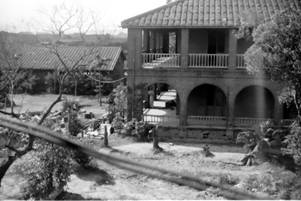 Our home in Kwelien China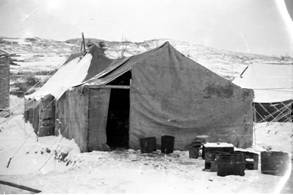 Supply tent in China winter 1944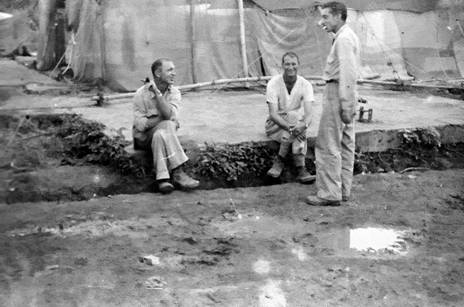 The officers rest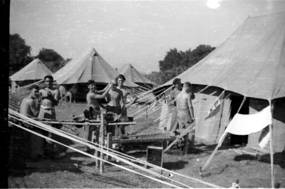 Hair cut day in camp outside Ledo 1944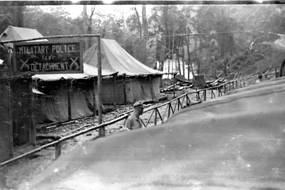 First stop on the Ledo road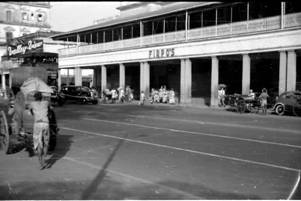 Firpo s restaurant Calcutta good food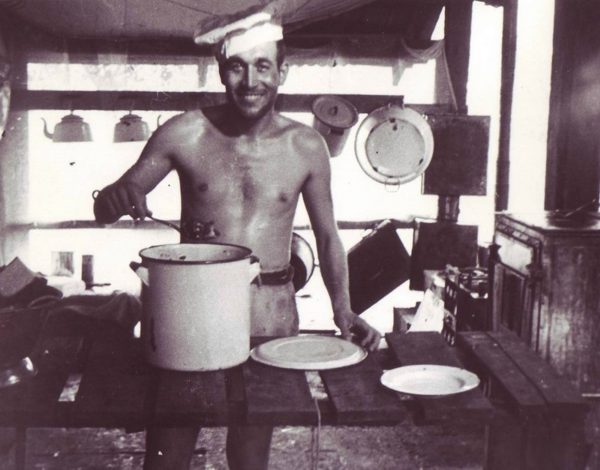 Galluci the Mogaung Burma, Cook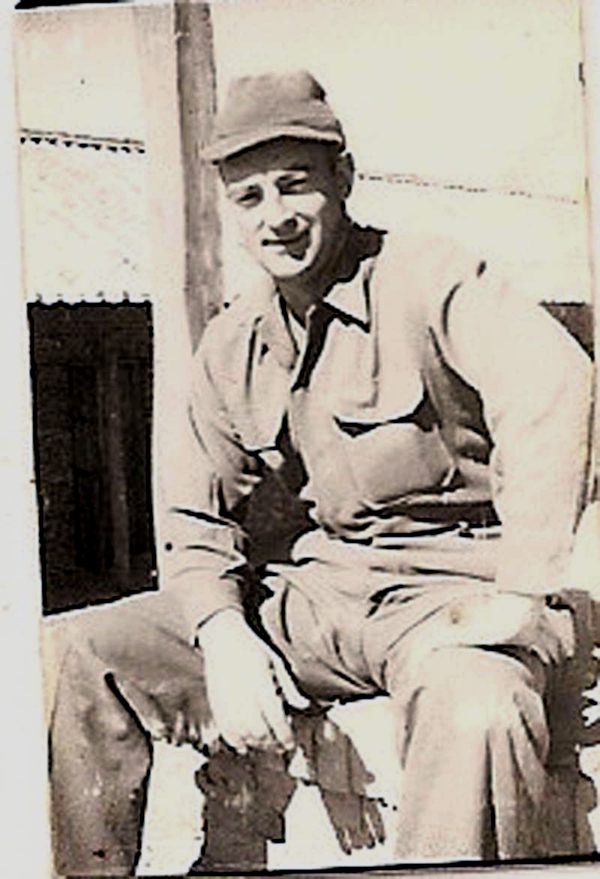 Monroe Staff Sargent of Supply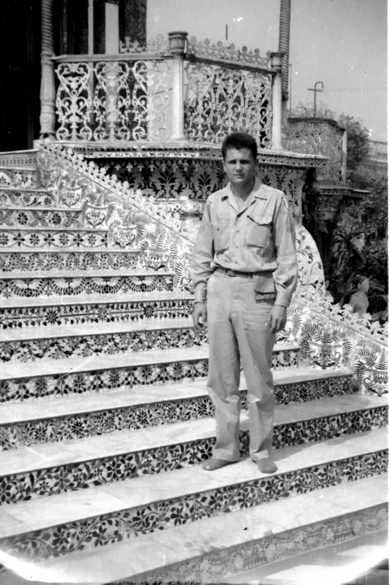 Paul Theobald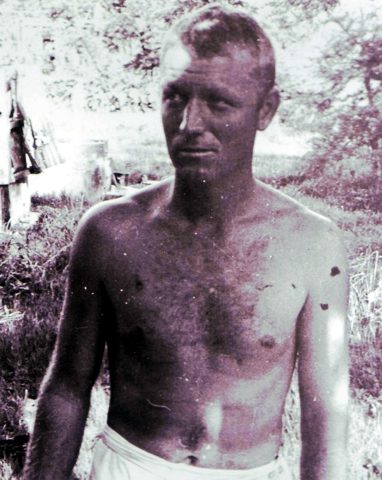 First Sergeant Stephens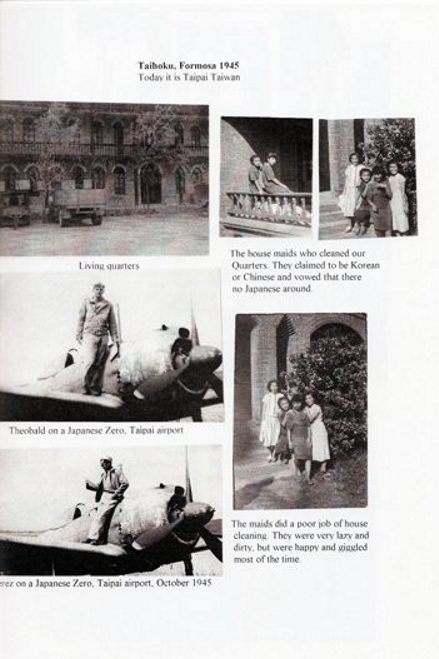 Formosa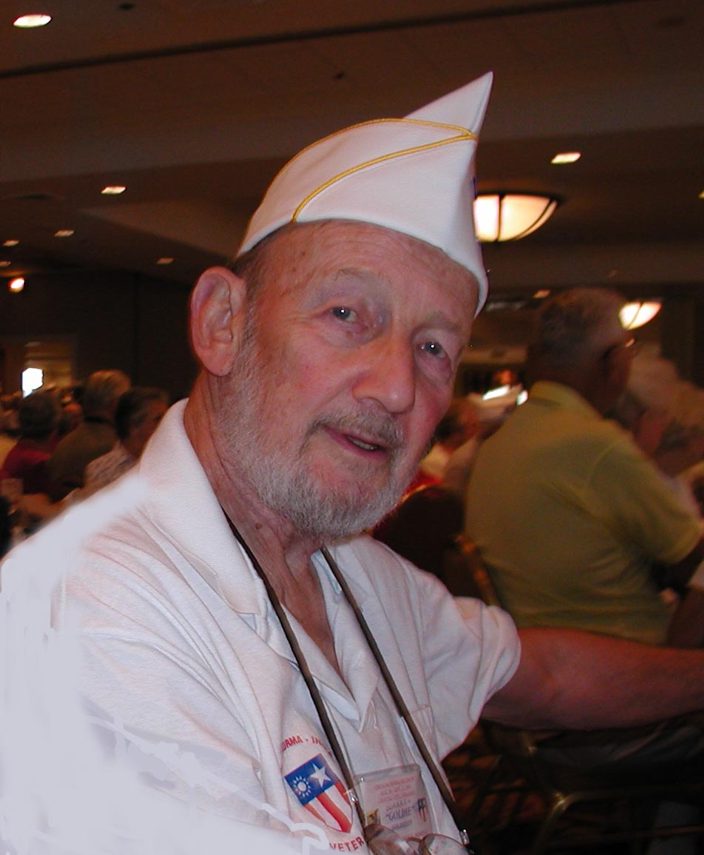 Goldie the company clerkDEPARTMENT OF THE ARMY BOARD FOR CORRECTION OF MILITARY RECORDS 1901 SOUTH BELL STREET 2ND FLOOR ARLINGTON, VA 22202-4508 SFMR-RBR December 7, 2007 MEMORANDUM FOR US ARMY REVIEW BOARDS AGENCY SUPPORT DIVISION, ST. LOUIS (SFMR-RBR-SL), 9700 PAGE AVENUE, ST. LOUIS, MO 63132-5200 SUBJECT: Army Board for Correction of Military Records Record of Proceedings for Goldstein, Warren R., SSN XXX-XX-XXXX, AR20070006614 1. Under the authority of Title 10, United States Code, section 1552, the recommendation of the Army Board for Correction of Military Records is hereby approved, and I direct that all of the Department of the Army records of the individual concerned be corrected as shown under Recommendation in the Proceedings of the Board in the subject case enclosed. 2. Request necessary administrative action be taken to effect the correction of records as indicated no later than April 7, 2008. Further, request that the individual concerned and counsel, if any, as well as any Members of Congress who have shown interest be advised of the correction and that the Army Board for Correction of Military Records be furnished a copy of the correspondence. BY ORDER OF THE SECRETARY OF THE ARMY: Signed Ene! Catherine C. Mitrano Director, Army Board for Correction of Military Records CF: ( )Applicant DEPARTMENT OF THE ARMY BOARD FOR CORRECTION OF MILITARY RECORDS 1901 SOUTH BELL STREET 2ND FLOOR ARLINGTON, VA 22202-4508 RECORD OF PROCEEDINGS IN THE CASE OF: GOLDSTEIN, WARREN R. BOARD DATE: 4 December 2007 DOCKET NUMBER: AR20070006614 I certify that hereinafter is recorded the true and complete record of the proceedings of the Army Board for Correction of Military Records in the case of the above-named individual. Ms. Catherine C. Mitrano Mr. David S. Griffin Director Analyst The following members, a quorum, were present: Ms. Linda Simmons Ms. Eloise Prendergast Mr. James Hastie Chairperson Member Member The Board considered the following evidence: Exhibit A - Application for correction of military records. Exhibit B - Military Personnel Records (including advisory opinion, if any: ABCMR Record of Proceedings (cont) AR20070006614 THE APPLICANT'S REQUEST, STATEMENT, AND EVIDENCE: 1. The applicant requests, in effect, award of the Combat Medical Badge, the Bronze Star Medal based on the award of the Combat Medical Badge, and four bronze service stars for his Asiatic-Pacific Campaign Medal. 2. The applicant states, in effect, that officers and others in his unit received these awards. 3. The applicant provides a copy of a letter from his former commander; three pages obtained from the Internet concerning the Bronze Star Medal based on the Combat Medical Badge; his WD AGO 53-55 (Enlisted Record and Report of Separation, Honorable Discharge); a DD Form 215 (Correction to DD Form 214, Certificate of Release or Discharge from Active Duty); a DA Form 1577; two statements from a former Soldier, including his WD AGO '53-55; a letter from the War Department Adjutant General's Office, St. Louis, Missouri; a letter from the National Personnel Records Center (NPRC), St. Louis, Missouri; his Honorable Discharge Certificate; a history of portable surgical hospitals; and a history of the 45th Portable Surgical Hospital. CONSIDERATION OF EVIDENCE: 1. Title 10, U.S. Code, section 1552(b), provides that applications for correction of military records must be filed within 3 years after discovery of the alleged error or injustice. This provision of law also allows the Army Board for Correction of Military Records (ABCMR) to excuse an applicant's failure to timely file within the 3-year statute of limitations if the ABCMR determines it would be in the interest of justice to do so. While it appears the applicant did not file within the time frame provided in the statute of limitations, the ABCMR has elected to conduct a substantive review of this case and, only to the extent relief, if any, is granted, has determined it is in the interest of justice to excuse the applicant's failure to timely file. In all other respects, there are insufficient bases to waive the statute of limitations for timely filing. 2. The applicant's service personnel records were lost or destroyed in a fire at the National Personnel Records Center in 1973. The records available to the Army Board for Correction of Military Records were provided in part by the applicant and also obtained from alternate sources and are sufficient for the Board to conduct a fair and impartial review of this case. The primary record available to this Board is the applicant's WD AGO Form 53-55 (Enlisted Record and Report of Separation and Honorable Discharge) with a date of separation of 18 January 1946. 3. The applicant's WD AGO Form 53-55 shows he was inducted on 28 January 1943 and entered active duty on 4 February 1943. 4. The applicant's WD AGO 53-55 shows he arrived in the China-Burma-India Theater on 26 December 1943 and departed the theater on 6 January 1946. 5. The applicant's WD AGO Form 100 (Separation Qualification Record) shows the applicant was assigned in Military Occupational Specialty (MOS) 055 (clerk general) for 24 months and in MOS 502 (chief clerk) for 4 months. The Summary of Military Occupations shows the applicant performed all company administrative work, made out medical reports, handled correspondence, and kept and filed records. The Summary also shows the applicant supervised 24 men in this work and that he served for 26 months in the China-Burma-India Theater. 6. On 18 January 1946, the applicant was discharged due to demobilization. He had completed 2 years, 11 months, and 14 days of active service that was characterized as honorable. 7. A history of the 45th Portable Surgical Hospital was obtained from the Internet, Wikipedia, the free encyclopedia. This history shows the 45th Portable Surgical Hospital was activated on 31 May 1943 at Camp White, Oregon with Captain W------k commanding. The history further shows the unit arrived in the China-Burma-India Theater on 26 December 1943, was in the China-BurmaIndia for almost 2 years, and was awarded "4 bronze battle stars." 8. The applicant provided a letter, dated 29 March 2007, from his former commander, Captain W------k, now a retired colonel, Army Medical Corps. The former commander stated the applicant was one of the original volunteers when the 45th Portable Surgical Hospital was activated and served with the unit until the war ended. The former commander further stated the unit performed front line emergency surgical operations on Allied troops fighting against the Japanese in Burma and China. The former commander further stated the applicant's record should show "the Combat Medical Badge and the Bronze Star." 9. The applicant provided a letter, dated 10 January 2007, from a former Soldier from his unit and included a copy of the former Soldier's WD AGO 53-55. The former Soldier's WD AGO 53-55 shows his MOS as a surgical technician and he was awarded the Combat Medical Badge and the Bronze Star Medal. 10. Army Regulation 672-5-1 (Military Awards), in effect at the time, provides, in pertinent part, that the Medical Badge was awarded to a member of the Army Medical Service (colonels and below) who had satisfactorily performed medical duties subsequent to 6 December 1941 while assigned or attached to a medical unit of an infantry unit of brigade, regimental or smaller size, or as a member of the medical platoon of an infantry or airborne brigade headquarters company, during any period the infantry unit was engaged in active ground combat. Battle participation credit was not sufficient; the infantry unit must have been in contact with the enemy. 11. Change 13, dated 18 May 1966, to Army Regulation 672-5-1 changed the title of the Medical Badge to the Combat Medical Badge. However, the eligibility requirements for the award remained the same. 12. Army Regulation 600-8-22 (Military Awards) provides, in pertinent part, that the evolution of the Combat Medical Badge stemmed from a requirement to recognize medical aid-men who shared the same hazards and hardships of ground combat on a daily basis with the infantry Soldier. This regulation further provides that since it's inception, the intent of the Department of the Army regarding this requirement has been that medical personnel must be personally present and under fire in order to be eligible for the awarding of the Combat Medical Badge. 13. Army Regulation 600-8-22 also provides, in pertinent part, that the Bronze Star Medal is awarded for heroism and for meritorious achievement or service in military operations against an armed enemy. The Bronze Star Medal is authorized for each individual who was cited in orders or awarded a certificate for exemplary conduct in ground combat between 7 December 1941 and 2 September 1945 or whose achievement or service, during that period, was confirmed by documents executed prior to 1 July 1947. An award of the Combat Infantryman Badge or the Combat Medical Badge is considered to be a citation in orders. This means, in effect, that the Bronze Star Medal is to be awarded to individuals who were authorized either badge for service during World War II. 14. Table B-1 of Army Regulation 600-8-22 (Military Awards) identifies the following campaigns for the China-Burma-India Theater: Burma (7 December 1941 - 25 May 1942; India-Burma (2 April 1942 - 28 January 1945); China Defensive (4 July 1942 - 4 May 1945); Central Burma (29 January 1945 - 15 July 1945); and China Offensive (5 May 1945 - 2 September 1945). DISCUSSION AND CONCLUSIONS: 1. The evidence shows the applicant's MOS was a clerk and a chief clerk. The applicant's WD AGO Form 100 shows he performed all of the administrative functions of his unit. 2. The WD AGO 53-55 for a former Soldier from the applicant's unit showing he was awarded the Combat Medal Badge and the Bronze Star Medal does not provide evidence the applicant is entitled to the same awards. However, it is noted the former Soldier's MOS shows he was a surgical technician. 3. The regulation provides that, to be eligible for the Combat Medical Badge, a Soldier must have performed medical duties with an infantry unit that is engaged in active ground combat. The evidence shows the applicant was assigned and performed administrative duties. There is no evidence the applicant was assigned to an infantry unit that was actively engaged in active ground combat. Therefore, the applicant does not meet the regulatory requirements for award of the Combat Medical Badge. 4. Based on the foregoing, the applicant is not entitled to award of the Bronze Star Medal based on award of the Combat Medical Badge. 5. The statement from the applicant's former commander, the history of the 45th Portable Surgical Hospital, and the applicant's WD AGO 53-55 provide sufficient evidence to conclude the applicant was assigned to the unit upon activation, deployed with the unit to the China-Burma-India Theater, and remained with the unit until he was returned to the U.S. for discharge. 6. The unit's history indicated the unit was awarded four bronze battle stars. Based on the unit's date of activation and arrival in the China-Burma-India Theater they would have participated in the India-Burma, the China Defensive, the Central Burma, and the China Offensive campaigns. 7. In view of the above, the applicant is entitled to four bronze service stars to be worn on his Asiatic-Pacific Campaign Medal. BOARD DETERMINATION/RECOMMENDATION: 1. The Board determined that the evidence presented was sufficient to warrant a recommendation for partial relief. As a result, the Board recommends that all Department of the Army records of the individual concerned be corrected to show he is entitled to four bronze service stars to be worn on his Asiatic-Pacific Campaign Medal. 2. The Board further determined that the evidence presented is insufficient to warrant a portion of the requested relief. As a result, the Board recommends denial of so much of the application that pertains to the Combat Medical Badge and the Bronze Star Medal based on award of the Combat Medical Badge. 3. The Board wants the applicant and all others concerned to know that this action in no way diminishes the sacrifices made by the applicant in service to our Nation. The applicant and all Americans should be justifiably proud of his service in arms. Come Let us research web Links "concerning regulation provides that, to be eligible for the Combat Medical Badge." U.S. Department of the Army Web Link www.army.mil Combat Medical Badge III. AWARD ELIGIBILITY: The following medical personnel, assigned or attached by appropriate orders to an infantry unit of brigade, regimental, or smaller size, or to a medical unit of company or smaller size, organic to an infantry unit of brigade or smaller size, during any period the infantry unit is engaged in actual ground combat are eligible for award of the badge, provided they are personally present and under fire during such ground combat: (1) Subsequent to 6 December 1941 Army Medical Department (Colonels and below), the Navy Medical Department (Captains and below), the Air Force Medical Service (Colonels and below), assigned or attached to the Army, who have satisfactorily performed medical duties. (2) Subsequent to 19 December 1989 Special Forces personnel possessing military occupational specialty 18D (Special Operations Medical Sergeant) who satisfactorily performed medical duties while assigned or attached to a Special Forces unit during any period the unit is engaged in actual ground combat, provided they are personally present and under fire. Retroactive awards are not authorized. (3) Subsequent to 16 January 1991 Personnel outlined in (1) above, assigned or attached to Armor or ground Cavalry units of brigade or smaller size, who satisfactorily performed medical duties while the unit is engaged in actual ground combat, provided they are personally present and under fire. Retroactive awards are not authorized. (4) Subsequent to 11 September 2001 Personnel outlined in (1) and (3) above, assigned or attached to or under operational control of any ground Combat Arms units (not to include members assigned or attached to Aviation units) of brigade or smaller size, who satisfactorily performed medical duties while the unit is engaged in actual ground combat provided they are personally present and under fire. Retroactive awards are not authorized. Awards will not be made to general or flag officers. Specific eligibility requirements by geographic area are listed in Army Regulation 600-8-22. IV. DATE APPROVED: The Combat Medical Badge was approved on 29 January 1945. In February 1951, the proposal to designate the badge as a one-time award was rescinded and it was approved for subsequent award during specified periods. The addition of stars to indicate subsequent awards was also approved. Policy changes were approved on 12 May 2004, by the Deputy Chief of Staff, G-1. And This Web Site: U.S. Head Quarters Department of the Army Pentagon.mil web site Combat Medical Badge III. AWARD ELIGIBILITY: The following medical personnel, assigned or attached by appropriate orders to an infantry unit of brigade, regimental, or smaller size, or to a medical unit of company or smaller size, organic to an infantry unit of brigade or smaller size, during any period the infantry unit is engaged in actual ground combat are eligible for award of the badge, provided they are personally present and under fire during such ground combat: (1) Subsequent to 6 December 1941 Army Medical Department (Colonels and below), the Navy Medical Department (Captains and below), the Air Force Medical Service (Colonels and below), assigned or attached to the Army, who have satisfactorily performed medical duties. (2) Subsequent to 19 December 1989 Special Forces personnel possessing military occupational specialty 18D (Special Operations Medical Sergeant) who satisfactorily performed medical duties while assigned or attached to a Special Forces unit during any period the unit is engaged in actual ground combat, provided they are personally present and under fire. Retroactive awards are not authorized. (3) Subsequent to 16 January 1991 Personnel outlined in (1) above, assigned or attached to Armor or ground Cavalry units of brigade or smaller size, who satisfactorily performed medical duties while the unit is engaged in actual ground combat, provided they are personally present and under fire. Retroactive awards are not authorized. (4) Subsequent to 18 September 2001 Medical personnel assigned or attached to or under operational control of any ground Combat Arms units (not to include members assigned or attached to Aviation units) of brigade or smaller size, who satisfactorily performed medical duties while the unit is engaged in active ground combat, provided they are personally present and under fire. Retroactive awards are not authorized for service prior to 18 September 2001. (5) Effective 3 June 2005, soldiers possessing MOS of 18D are no longer eligible for award of the CMB. Awards will not be made to general or flag officers. Specific eligibility requirements by geographic area are listed in Army Regulation 600-8-22. IV. DATE APPROVED: The Combat Medical Badge was approved on 29 January 1945. In February 1951, the proposal to designate the badge as a one-time award was rescinded and it was approved for subsequent award during specified periods. The addition of stars to indicate subsequent awards was also approved. Policy changes were approved on 12 May 2004, by the Deputy Chief of Staff, G-1. On 11 February 2005, the Chief of Staff, Army, approved changes to the CMB policy. CHINA - BURMA - INDIA Remembering the Forgotten Theater of World War II India-Burma 2 April 1942-28 January 1945 web site From History.Army.mil The U.S. Army Campaigns of World War II, China Defense 4 July 1942--4 May 1945 The U.S. Army Campaigns of World War II, China Offensive 5 May--2 September 1945 Some Excerpts From the above web sites: 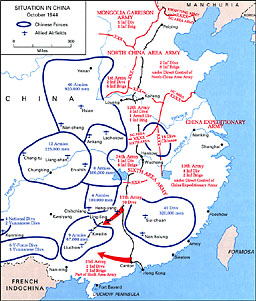 Situation in China October 1944 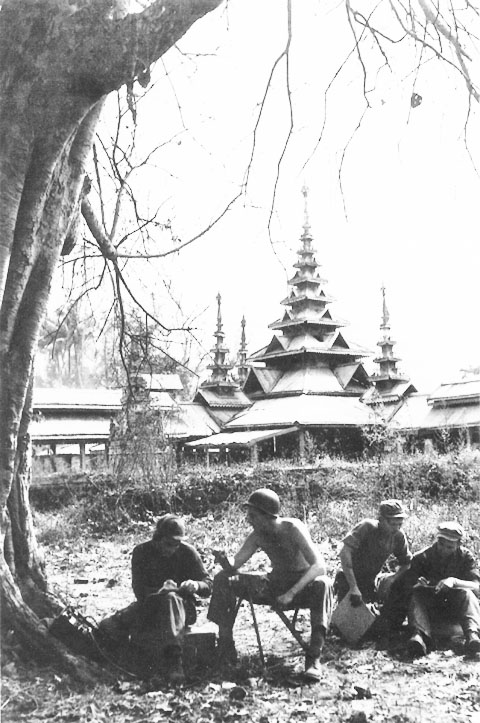 American soldiers attached to a Chinese division send a message from the field. (U.S. Army Military History Institute)  Chinese soldiers await removal to a field hospital for rehabilitation. (U.S. Army Military History Institute) 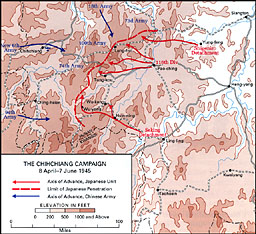 The Chihchiang Campaign 8 April--7 June 1945  The Chinese return to Liuchow in July 1945. (U.S. Army Military History Institute) CHAPTER 5, Special Operations in the China-Burma-India Theater Behind the Japanese Lines in Burma, UNCLASSIFIED Welcome to the Dragon of the Mangroves Official Site Buma Campaign ORGANIZATION CHARTS, Japanese Army Order of Battle Around 1944 The U.S. Army Campaigns of World War II, Eastern Burma 29 January--15 July 1945 The U.S. Army Campaigns of World War II, India-Burma 2 April 1942--28 January 1945 The U.S. Army Campaigns of World War II, Burma, 1942 7 December 1941--26 May 1942 United States Army in World War II, China-Burma-India Theater, Stillwell's Mission to China by Charles F. Romanus and Riley Sunderland Webmaster Research Notes: The Order of the Cloud and Banner (雲麾勳章) is a military award of the Republic of China. It was instituted on June 15, 1935 and is awarded in nine grades for contributions to national security. It is also sometimes referred to as the Order of the Resplendent Banner. 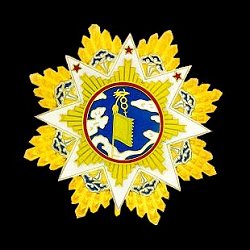 Reference web link for the above Note: Order of the Cloud and Banner List of orders, decorations and medals of the Republic of China Chinese Burma India Theater World War II Uniform China Burma India Theater (CBI) (later IBT, or India-Burma theater) was the name used by the United States Army for its forces operating in conjunction with British and Chinese Allied air and land forces in China, Burma, and India during World War II. Well-known US units in this theater included the Flying Tigers, transport and bomber units flying the Hump, the 1st Air Commando Group, the engineers who built Ledo Road, and the 5307th Composite Unit (Provisional), otherwise known as Merrill's Marauders. 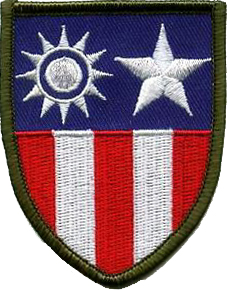
The Asiatic-Pacific Campaign Medal is a service decoration of the Second World War which was awarded to any member of the United States military who served in the Pacific Theater from 1941 to 1945 and was created on November 6, 1942 by Executive Order 9265 [1] issued by President Franklin D. Roosevelt. There were 21 Army and 48 Navy/Marine official campaigns of the Pacific Theater, denoted on the service ribbon by campaign stars; some construction battalion units issued the medal with award numerals. The arrowhead device is authorized for those campaigns which involved amphibious assaults. The Fleet Marine Force combat operation insignia is also authorized for certain sailors. The flag colors of Japan and the United States are visible in the ribbon. The Asiatic-Pacific Campaign Medal was first issued as a ribbon in 1941. A full medal was authorized in 1947, the first of which was presented to General of the Army Douglas MacArthur. The European Theater equivalent of the decoration was known as the European-African-Middle Eastern Campaign Medal. 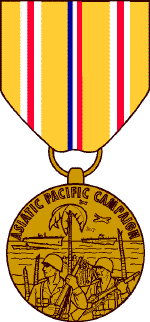 First awarded December 7, 1941 Last awarded March 2, 1946 Reference: Asiatic-Pacific Campaign Medal Army campaigns Authorized Army campaigns for the Pacific Theater are as follows: Philippine Island 7 Dec 41 - 10 May 42 Burma, 1942 7 Dec 41 - 26 May 42 Central Pacific 7 Dec 41 - 6 Dec 43 East Indies 1 Jan 42 - 22 Jul 42 India-Burma 2 Apr 42 - 28 Jan 45 Air Offensive, Japan 17 Apr 42 - 2 Sep 45 Aleutian Islands 3 Jun 42 - 24 Aug 43 China Defensive 4 Jul 42 - 4 May 45 Papua 23 Jul 42 - 23 Jan 43 Guadalcanal 7 Aug 42 - 21 Feb 43 New Guinea 24 Jan 43 - 31 Dec 44 Northern Solomons 22 Feb 43 - 21 Nov 44 Eastern Mandates 7 Dec 43 - 14 Jun 44 Bismarck Archipelago 15 Dec 43 - 27 Nov 44 Western Pacific 17 Apr 44 - 2 Sep 45 Leyte 17 Oct 44 - 1 Jul 45 Luzon 15 Dec 44 - 4 Jul 45 Central Burma 29 Jan 45 - 15 Jul 45 Southern Philippines 27 Feb 45 - 4 Jul 45 Ryukyus 26 Mar 45 - 2 Jul 45 China Offensive 5 May 45 - 2 Sep 45 Reference: Asiatic-Pacific Campaign Medal Executive Order 9265 by President Franklin D. Roosevelt November 6, 1942 JOHN W. MOUNTCASTLE, Brigadier General, USA, Chief of Military History M. P. W. Stone, Secretary of the Army China Burma India Theater of World War II Tribut to Warren R. Goldstein and Paul Theobald, M.D. WWII Veterans
1/1/2008 |
|
